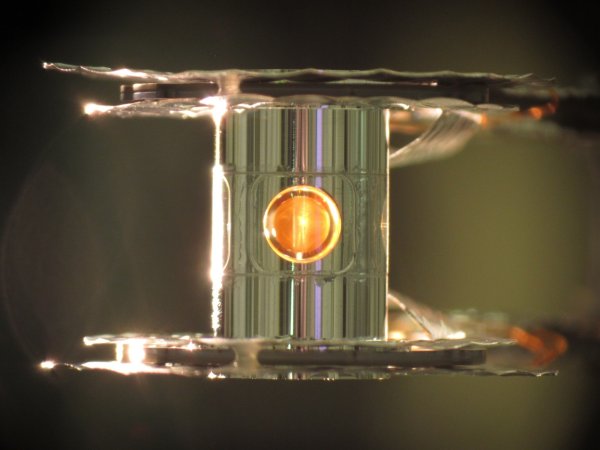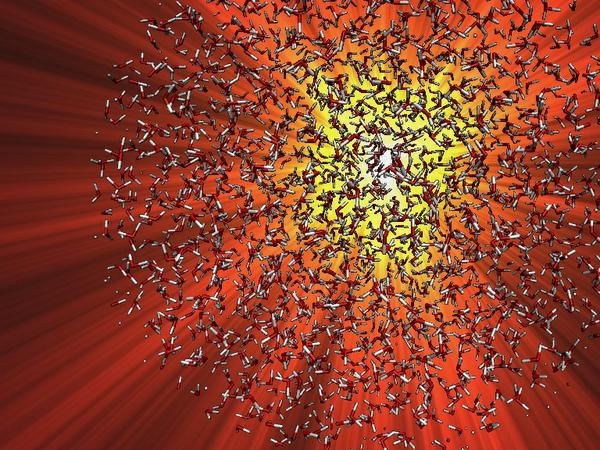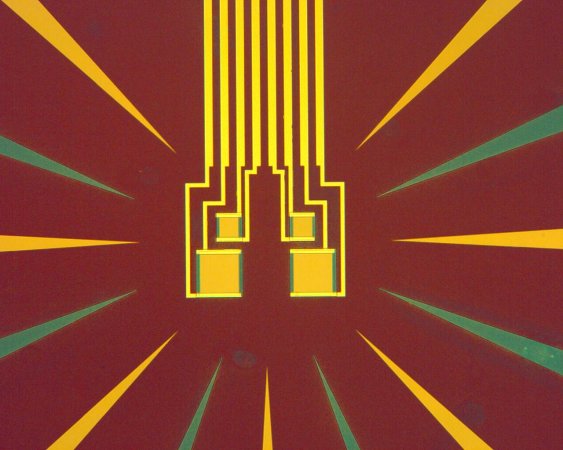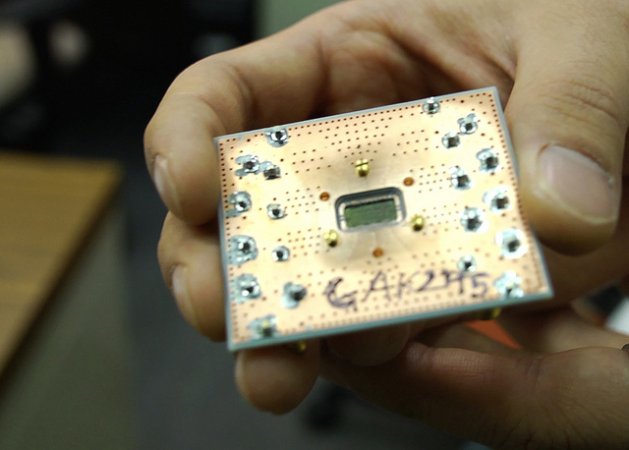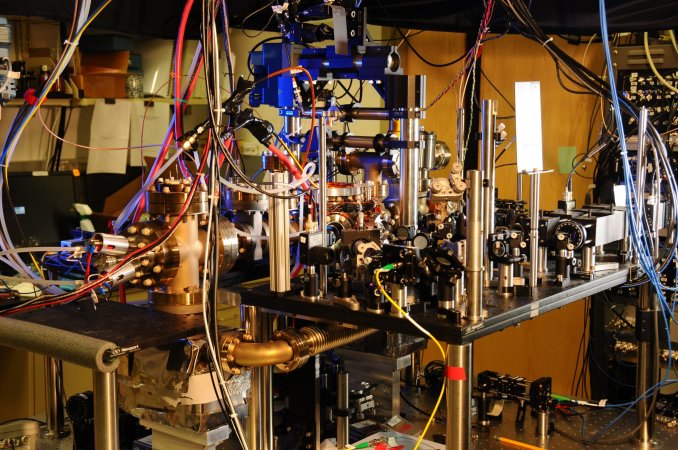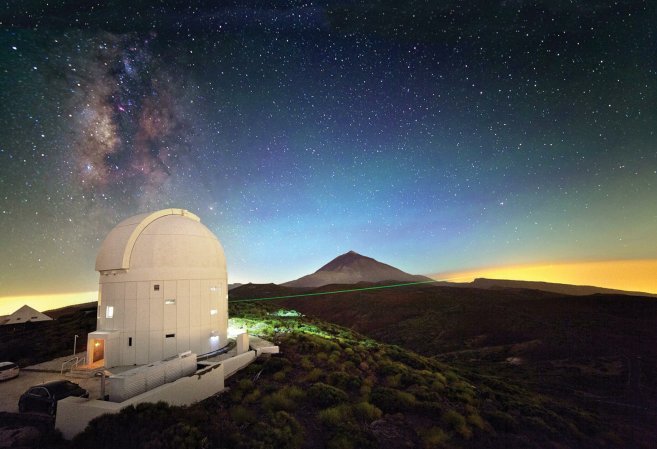

Scientists have been able to get a super-high-energy beam of laser light to travel farther than ever—a little more than seven feet, in a lab demonstration.
In the future, such lasers could go into long-distance sensors, or chemical-identifying spectrometers. One more unusual application scientists have thought of is directing lightning. In 2008, a team of European physicists used high-intensity laser pulses to trigger “electric events”—though not lightning bolts—in a thundercloud. It will take more development to trigger lightning bolts, the scientists wrote in a paper they published at the time. This new experiment is a step toward that development.
The laser pulses we’re talking about are very high energy, so they don’t act exactly like your cat’s favorite toy does. Intensely energetic laser beams move through the air differently than ordinary laser beams, forming something physicists call optical filaments. The filaments tend to lose energy quickly and dissipate.
To make a laser filament last longer, a team of American physicists decided to shine it inside another, less intense beam of light, which they called a dressing beam. The dressing beam feeds energy into the filament so it can stretch farther. In an experiment, the American team showed an optical filament accompanied by a dressing beam stretches about 7.2 feet. Without the dressing beam, the filament was only about eight inches long. Other teams have been able to extend optical filaments to twice their original lengths, the team wrote in a paper they published in the journal Nature Photonics, while this effort stretched an optical filament by 11 times its original length.
